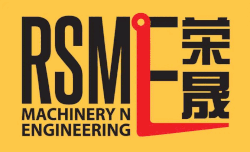
1. Pre-Operation Checks
Before operating a forklift, it’s essential to conduct thorough checks to ensure the machine is safe and ready for use:
Inspect the forklift’s appearance for any visible damage or leaks.
Check and top up fuel, lubricating oil, and cooling water as necessary.
Test the starting, running, and braking systems for proper function.
Verify that all lights and audio signals are in working order.
Monitor pressure and temperature gauges during operation.
For electric forklifts, inspect the battery circuit to ensure all components are functioning correctly.
2. Safe Starting Procedures
Starting the forklift safely prevents unnecessary risks:
Survey the area to ensure there are no obstacles or personnel nearby. Signal by sounding the horn before starting.
For forklifts with air brakes, ensure the brake pressure gauge reads the specified level.
Confirm that the load is stable and secure before moving.
Start the forklift slowly and smoothly to maintain control.
3. Safe Driving Practices
Following proper driving techniques ensures safety during movement:
Fork Positioning: Keep the forks 300-400mm above the ground, with the mast tilted slightly backward for stability.
Avoid Raising Forks Too High: High fork positions raise the forklift’s centre of gravity, reducing stability. Be cautious of overhead obstacles.
After Unloading: Lower the forks to a normal driving position before moving.
Turning Safely: Use signals near pedestrians or other vehicles. Avoid sharp, high-speed turns to prevent tipping.
Downhill Driving: Do not coast with the engine off. For steep slopes, drive in reverse to prevent goods from falling forward.
Braking: Avoid sudden braking, especially with a load. Use brakes carefully on slopes and never rely on inertia to stop.
Traffic Rules: Adhere to site traffic regulations and maintain a safe distance from other vehicles.
Visibility: If the load blocks the driver’s view, drive the forklift in reverse for better visibility.
Rear-Wheel Steering: Forklifts steer from the back, so watch for rear-end swings to avoid collisions.
Ramps: Never turn on a ramp or drive across it. Always move up or down the ramp in a straight line.
4. Loading and Unloading Safely
Correct handling of goods is critical for forklift safety and efficiency:
Fork Positioning: Adjust the distance between forks to balance the load evenly. The load should be close to the mast for stability.
Visibility: Ensure the load does not obstruct the driver’s view.
Braking: Use the brakes when loading and unloading to keep the forklift steady.
Smooth Handling: Approach goods slowly and carefully. Avoid crushing pallets, wooden blocks, or other materials.
Fork Placement:
Insert the forks fully under the load to prevent sliding.
Tilt the mast slightly backward to stabilise the load during movement.
When unloading, tilt the mast slightly forward to gently place the load and pull the forks out carefully.
Avoid Collisions: Never fork goods at high speed or strike objects with the forks.
Safety Around Personnel:
Keep personnel clear of the forks during operation to avoid injury.
Do not allow personnel to stand on the forks or under raised loads.
Forklifts should never be used to lift personnel to high places.
Safe Unloading: Avoid using braking inertia to slide or drop objects, as this can cause damage or accidents.
5. Forklift Safety in High-Risk Environments
Operating forklifts in hazardous environments, like construction sites, warehouses, or outdoor yards, requires additional caution. Drivers must be trained to manage risks such as:
Uneven terrain and slopes.
Limited visibility in confined spaces.
Heavy loads that may shift during movement.
6. Regular Maintenance and Inspections
Forklift safety starts with proper maintenance:
Conduct daily checks to ensure key components are in good condition.
Inspect tyres, brakes, lights, and hydraulic systems regularly.
Address any leaks, cracks, or wear immediately to avoid hazards.

Comments